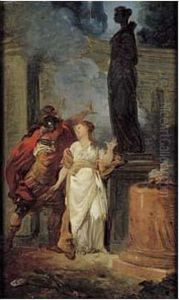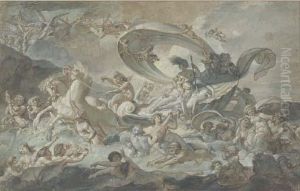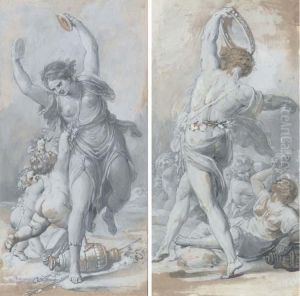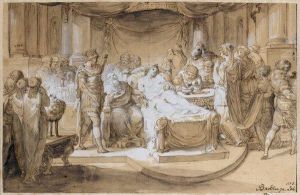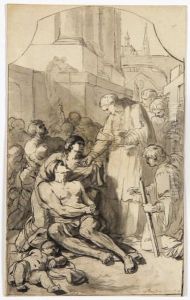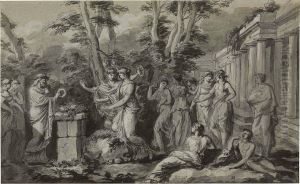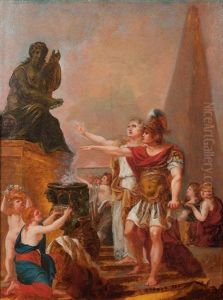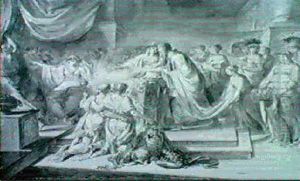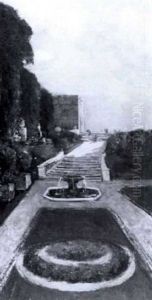Jean Bardin Paintings
Jean Bardin was a French painter and art instructor born on November 20, 1732, in Montbard, a small town in the Burgundy region of France. He is primarily known for his classical and historical subjects, which reflected the art movements of Neoclassicism that were gaining prominence during his lifetime.
Bardin demonstrated early talent in drawing and painting, which led him to pursue formal training. His artistic education began in Dijon, and later, he moved to Paris to further his studies. Success came when he won the prestigious Prix de Rome in 1756 for his painting 'The Death of Cato,' which allowed him to study at the French Academy in Rome, an opportunity that was considered crucial for the development of an artist in that era.
During his stay in Italy, Bardin was heavily influenced by the antique and Renaissance art that he was exposed to, which greatly influenced his style. He was particularly impressed by the works of Raphael, among others. After spending several years in Rome, he returned to France, where he became an active member of the Royal Academy of Painting and Sculpture.
Bardin's reputation as a painter was solidified by his participation in the Salon, the official art exhibition of the Académie des Beaux-Arts in Paris. His works were well-received, and he gained patronage from various members of the French aristocracy and later from the government. Bardin was noted for his ability to convey moral narratives and virtues through his paintings, a characteristic appreciated in Neoclassical art.
Apart from painting, Bardin was also a dedicated art educator. He was appointed as a professor at the École Royale de Dessin (Royal School of Drawing), which later became part of the École des Beaux-Arts. There, he influenced a generation of young artists, imparting the Neoclassical ideals and the importance of drawing and composition.
Jean Bardin's career was marked by the pursuit of harmony, order, and the portrayal of idealized beauty, hallmarks of the Neoclassical movement. Some of his notable works include 'Diana and Endymion' and 'The Contest for the Prix de Rome,' which exemplify his refined style and classical subject matter.
Bardin's contribution to French art was recognized in his time, and he was awarded various honors, including the appointment as a knight of the Order of Saint Michael. He continued to paint and teach until his death on July 21, 1809, in Paris. His legacy persists in the works he left behind and the influence he had on the students he taught, contributing to the rich tapestry of French Neoclassical art.
